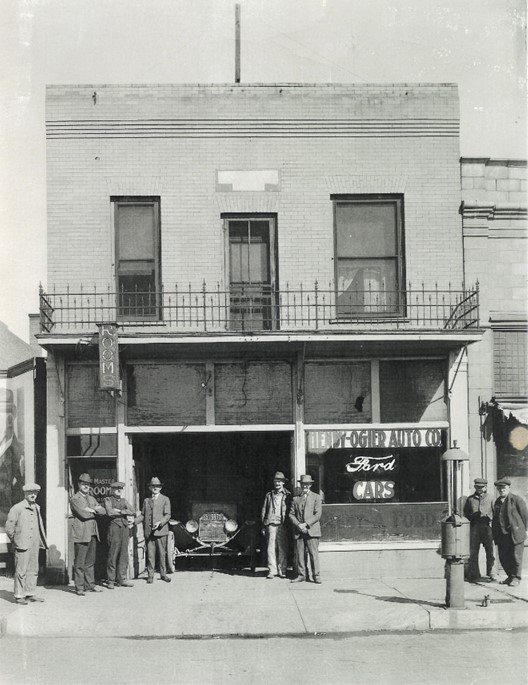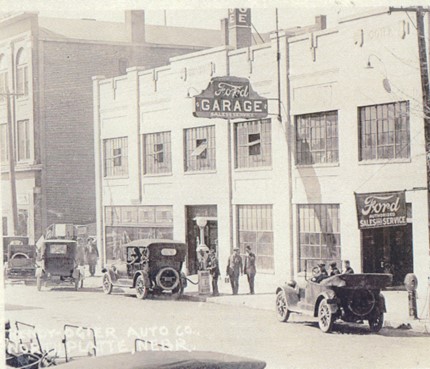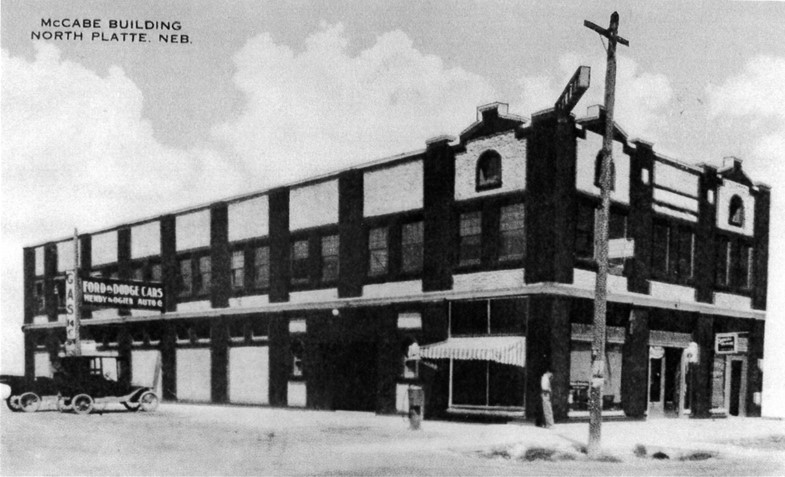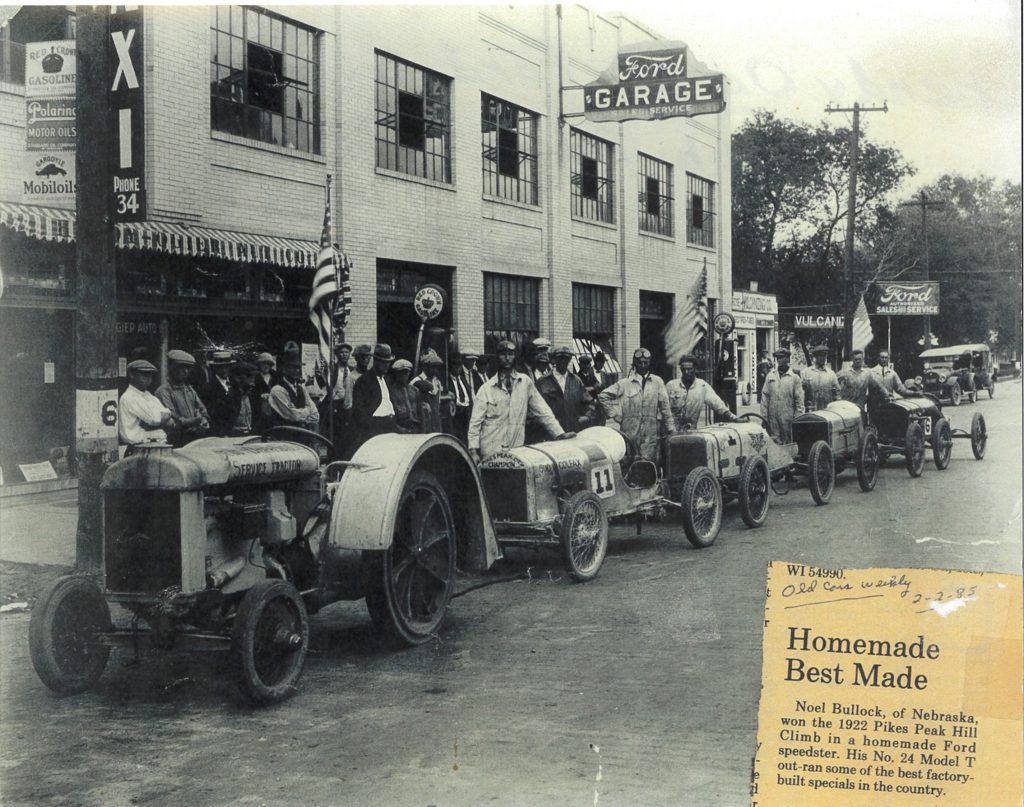Originally published to Facebook.com/NorthPlattePL on March 26, 2021.
Our History Series looks back over 100 years ago to…
February 27th, 1912 a partnership was formed when Edwin Ogier and William Hendy leased the LeMasters garage at 215 East 6th, North Platte, Nebraska They formed a partnership to sell cars, specifically Ford automobiles. In case you are wondering, Henry Ford and 12 others invested $28,000 and created the Ford Motor Company on June 16, 1903. The first car built by the Company was sold July 15, 1903. Henry owned 25.5% of the stock in the new organization. He became president and controlling owner in 1906.
Back to North Platte History, the business partnership was called the, “Hendy-Ogier Auto Company” and business was good. So good, that on August 12th, 1913 the North Platte Semi-Weekly Tribune announced they had moved to a larger location.
Local physician, Dr. Nicholas McCabe was constructing a new building on the corner of 4th and Dewey and signed an agreement with the partners to lease the west half of the lower floor of his new two story building to them. The Hendy Ogier Auto Company stayed in the McCabe Building until they saw a need to expand once again. Some four years later, in July of 1917, they bought a 66X 132 foot lot, east of the Elks Building with the intentions of putting up a two-story building. They also took out an option for the additional 44 foot lot east of their new lot.
It was an ideal location for the partners. The Lincoln Highway, which was new, would pass right by the front of their new building. The Lincoln Highway is one of the earliest transcontinental highway routes for automobiles across the United States of America. Conceived in 1912 by Indiana entrepreneur Carl G. Fisher, and formally dedicated October 31, 1913, the Lincoln Highway ran coast-to-coast from Times Square in New York City west to Lincoln Park in San Francisco. It originally ran through 13 states: New York, New Jersey, Pennsylvania, Ohio, Indiana, Illinois, Iowa, Nebraska, Colorado, Wyoming, Utah, Nevada, and California. In 1915, the “Colorado Loop” was removed, and in 1928, a realignment relocated the Lincoln Highway through the northern tip of West Virginia. Thus, there are a total of 14 states, 128 counties, and more than 700 cities, towns and villages through which the highway passed at some time in its history.
On July 4, 1918 they opened up their doors for the first time in their own building. The cost to build was $11,000.
By 1924, Ogier and Hendy saw a demand for gasoline filling stations and decided to expand into the option on the original lot, to the east. On April 18, 1925, the new two-story “superstation” opened facing Fourth and Pine (now Bailey) Streets. It was built to match the west two-story building of canary brick. The second floor on the east side was a 44 X 66 machine shop.
In October of 1929 they enlarged and remodeled the building. They added extra space, re-enforcing concrete, and added the third floor for roof parking. Total floor space would be 70,000 square feet. The remodeling was done by Beck Construction.
In 1934 a wall was put up and the east side became a Pontiac Dealership while the west side remained the Ford Dealership.
On October 15, 1938 the North Platte Telegraph announced the firm was sold to Joe Souder of North Platte, and Allen & Paul McQuire from Grand Island. The building remained an auto dealership, changing names many times, until 1961 when it opened its doors as the O’Connor Five and Ten Cent Store. Many years later it became Whitaker’s Furniture Store. Today it is the Bruce Furniture Store.
Many members of the North Platte community remember the original ramp that was used to drive cars up to the 2nd floor as being the ramp that took kids up to the second floor of the O’Conner store. That is where all the toys were kept!
We hope you’ve enjoyed another post on North Platte History! Have a great weekend!



